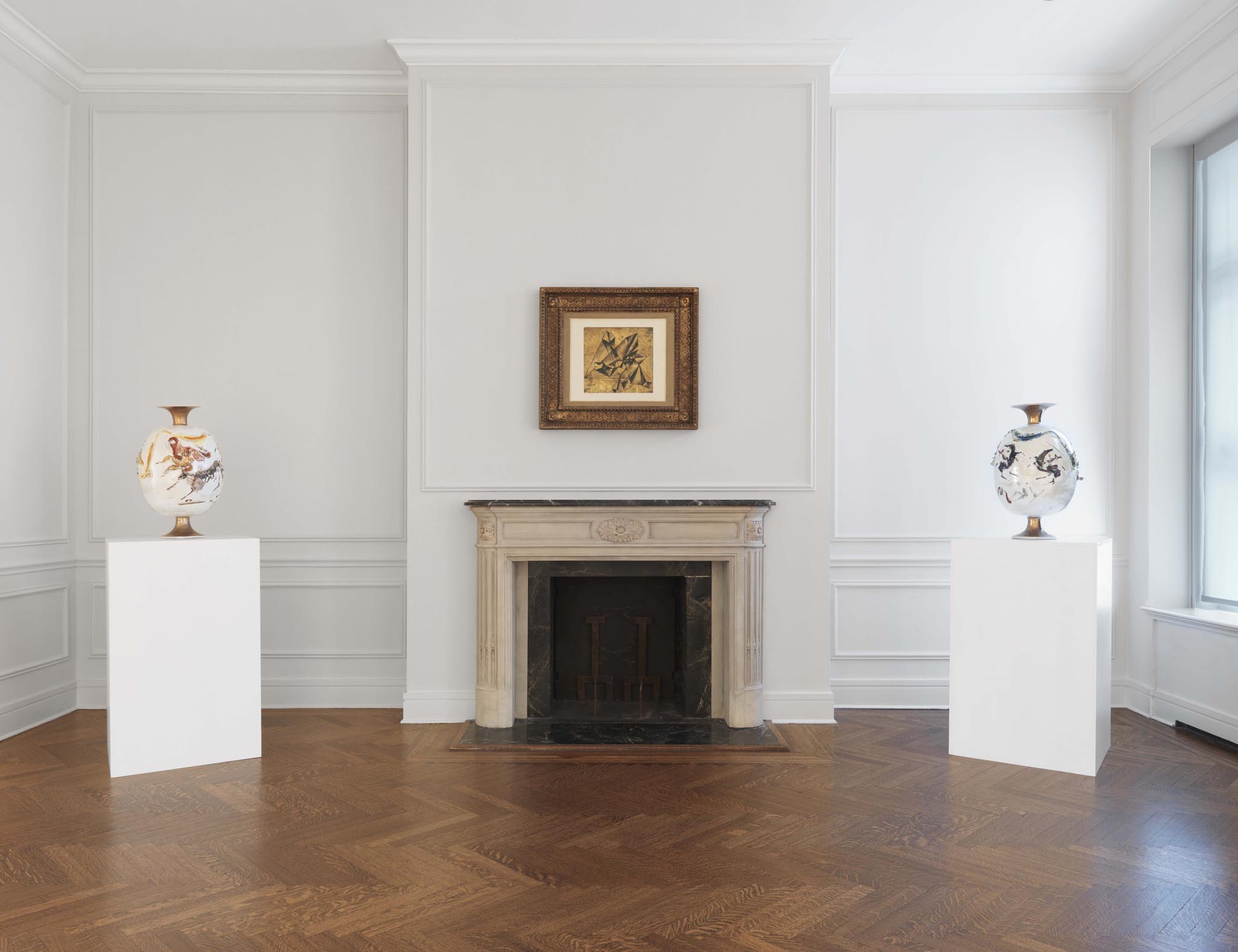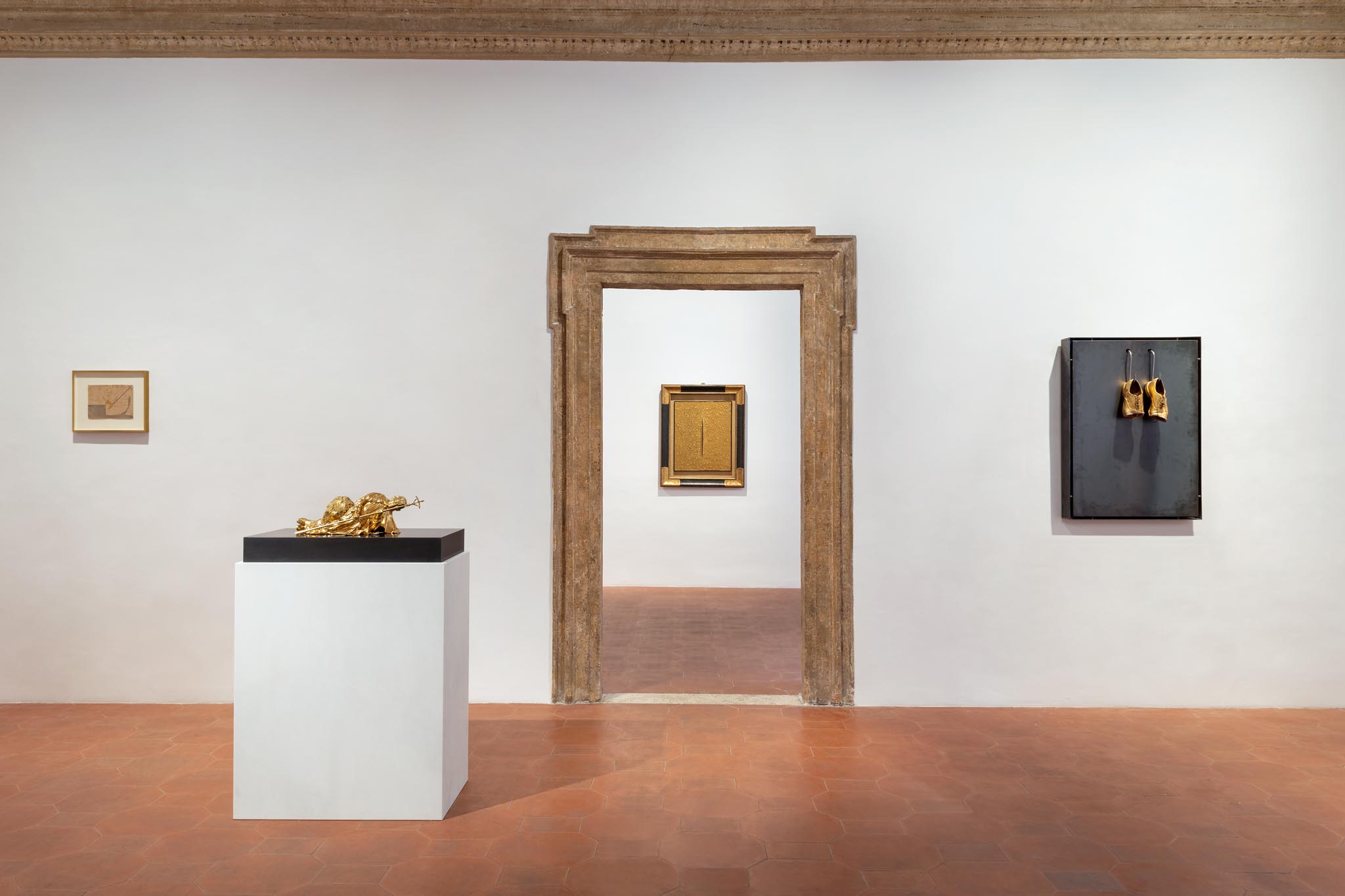Alberto Burri (Città di Castello, 1915 – Nizza, 1995), was born in a small town in central Italy. Surprisingly, his path didn’t begin in the arts but in medicine. He studied at the University of Perugia and graduated in 1940. Soon after, he was called to serve as a medical officer during World War II. In 1943, he was deployed to North Africa, where he was captured by British forces after Italy’s surrender. He spent eighteen months in a prisoner-of-war camp in Hereford, Texas where he began to paint.
After returning to Italy in 1946, Burri moved to Rome and shared a studio with sculptor Edgardo Mannucci. The following year, he had his first solo exhibition at Galleria La Margherita, introduced by the poets Libero De Libero and Leonardo Sinisgalli. Around the same time, he began showing his work with the Art Club, a key space for contemporary Italian art.
In 1948, his second solo exhibition Bianchi e Catrami, also held at La Margherita, marked a turn toward abstraction. That year, Burri traveled to Paris for the first time, visited Joan Miró’s studio, discovered the work of Alberto Magnelli and explored exhibitions at the Galerie René Drouin, a hub for the Informal art movement.
In 1949, he created SZ1, the first of his iconic sack works. 1950 was a year of intense experimentation, with the birth of the Muffe and Gobbi series, and the first jute sacks, patched and stitched.
In 1951, Burri co-founded the Origine group with Mario Ballocco, Giuseppe Capogrossi, and Ettore Colla. The following year saw several important exhibitions, including Neri e Muffe at Rome’s Galleria dell’Obelisco and Omaggio a Leonardo at the Origine Foundation. In 1952, he attempted for the first time to show his work at the Venice Biennale. While Lo Strappo was rejected, Lo Studio per lo Strappo — later acquired by Lucio Fontana — was accepted. Burri also co-signed the Manifesto of the Spatial Movement for Television with Fontana and others.
His international breakthrough came in 1953, with the exhibition Alberto Burri: Paintings and Collages at the Allan Frumkin Gallery in Chicago, which later moved to Eleanor Ward’s Stable Gallery in New York. That same year, Burri met James Johnson Sweeney, then director of the Solomon R. Guggenheim Museum, who published the first major monograph on the artist in 1955. Burri’s work was also featured in Guggenheim exhibitions, and that year ended with another solo show at the Origine Foundation, introduced by critic Emilio Villa.
In 1955, five of Burri’s works were included in The New Decade: 22 European Painters and Sculptors, organized by MoMA in New York. He also participated in the Rome Quadriennale and the São Paulo Biennale.
Throughout the 1950s and into the 1960s, Burri’s exhibition activity grew steadily. Major anthological shows were held in cities including Paris, Rome, L’Aquila, Livorno, Turin, Houston, Minneapolis, Buffalo, Pasadena, Darmstadt, and Rotterdam.
In 1963, he presented his last works made with transparent plastic film at Marlborough Gallery in Rome. The Plastiche series — works using melted plastic — would define much of that decade and earned strong support from critic Cesare Brandi, who dedicated a key monography to Burri that same year. Burri’s works continued to travel the world, appearing in group exhibitions such as Contemporary Italian Paintings, which toured several Australian cities, and Peintures italiennes d’aujourd’hui, which traveled across the Middle East and North Africa.
The 1970s marked a shift toward large-scale projects and monumental materials. Burri created the Cretti and Cellotex series, using cracked surfaces and industrial panels. In 1973, following an earthquake that devastated the Sicilian town of Gibellina, he responded by covering the ruins with a vast layer of white concrete. The result — his only land art piece — is known as the Grande Cretto. In 1976, with the support of ceramist Massimo Baldelli, Burri created the Grande Cretto Nero (1985–1989), exhibited in the Franklin D. Murphy Sculpture Garden at UCLA. A similar work was also shown at the Capodimonte Museum in Naples.
A major retrospective, Alberto Burri: A Retrospective View 1948–1977, was held at the Solomon R. Guggenheim Museum in 1977. Two years later, Burri completed the Cicli, a series of ten monumental works that reflected on the key phases of his career. These are now permanently displayed at the Ex Seccatoi del Tabacco in Città di Castello. In 1981, the Cicli began an international tour, and Burri established the Fondazione Burri at Palazzo Albizzini, also in his hometown.
In the following years, Burri’s works were shown at Milan’s Pinacoteca di Brera (for the opening of its contemporary art section), in The Italian Metamorphosis 1943–1968 at the Guggenheim in New York, at the National Gallery in Athens, and at the Uffizi Gallery in Florence. After his death, Burri’s legacy continued to grow, with exhibitions in many of the world’s most important museums, including Centre Pompidou in Paris, Tate Gallery in London, Galleria Nazionale d’Arte Moderna e Contemporanea in Rome, Castello di Rivoli, and once again, the Guggenheim Museum in New York.

